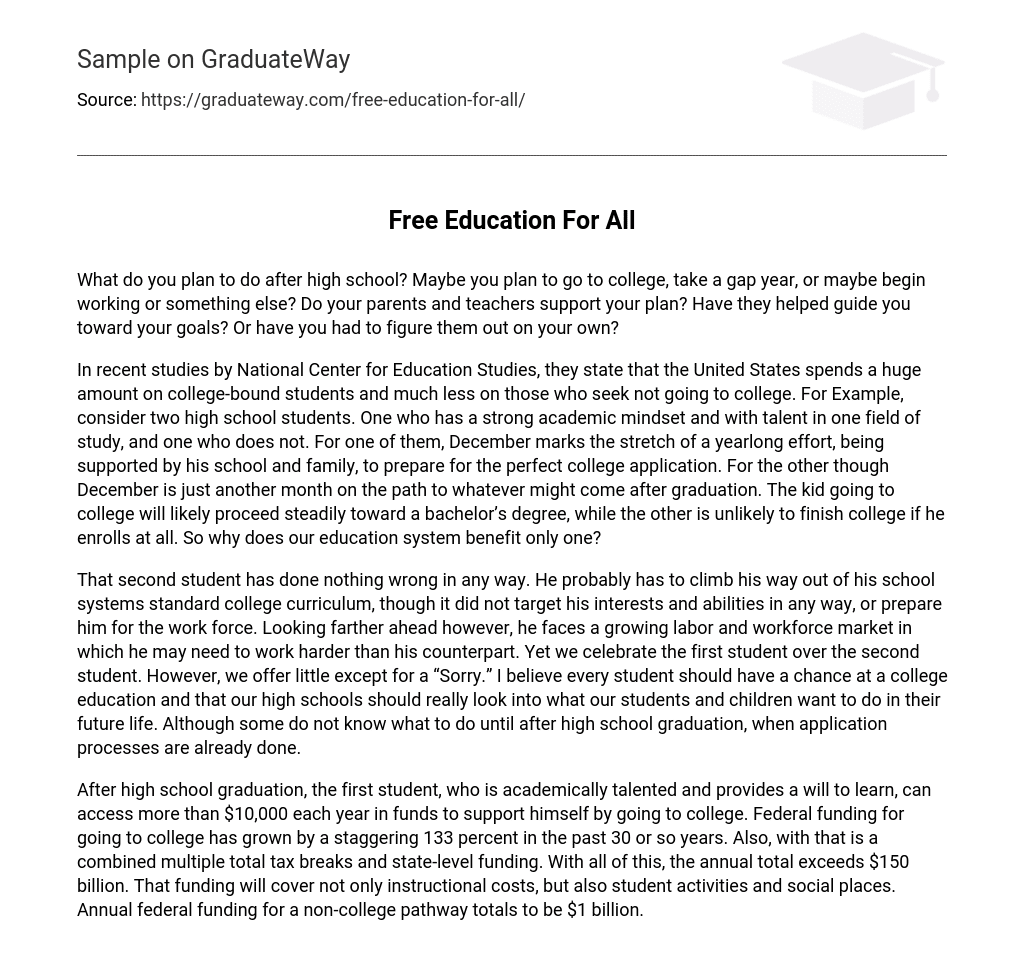What do you plan to do after high school? Maybe you plan to go to college, take a gap year, or maybe begin working or something else? Do your parents and teachers support your plan? Have they helped guide you toward your goals? Or have you had to figure them out on your own?
In recent studies by National Center for Education Studies, they state that the United States spends a huge amount on college-bound students and much less on those who seek not going to college. For Example, consider two high school students. One who has a strong academic mindset and with talent in one field of study, and one who does not. For one of them, December marks the stretch of a yearlong effort, being supported by his school and family, to prepare for the perfect college application. For the other though December is just another month on the path to whatever might come after graduation. The kid going to college will likely proceed steadily toward a bachelor’s degree, while the other is unlikely to finish college if he enrolls at all. So why does our education system benefit only one?
That second student has done nothing wrong in any way. He probably has to climb his way out of his school systems standard college curriculum, though it did not target his interests and abilities in any way, or prepare him for the work force. Looking farther ahead however, he faces a growing labor and workforce market in which he may need to work harder than his counterpart. Yet we celebrate the first student over the second student. However, we offer little except for a “Sorry.” I believe every student should have a chance at a college education and that our high schools should really look into what our students and children want to do in their future life. Although some do not know what to do until after high school graduation, when application processes are already done.
After high school graduation, the first student, who is academically talented and provides a will to learn, can access more than $10,000 each year in funds to support himself by going to college. Federal funding for going to college has grown by a staggering 133 percent in the past 30 or so years. Also, with that is a combined multiple total tax breaks and state-level funding. With all of this, the annual total exceeds $150 billion. That funding will cover not only instructional costs, but also student activities and social places. Annual federal funding for a non-college pathway totals to be $1 billion.





